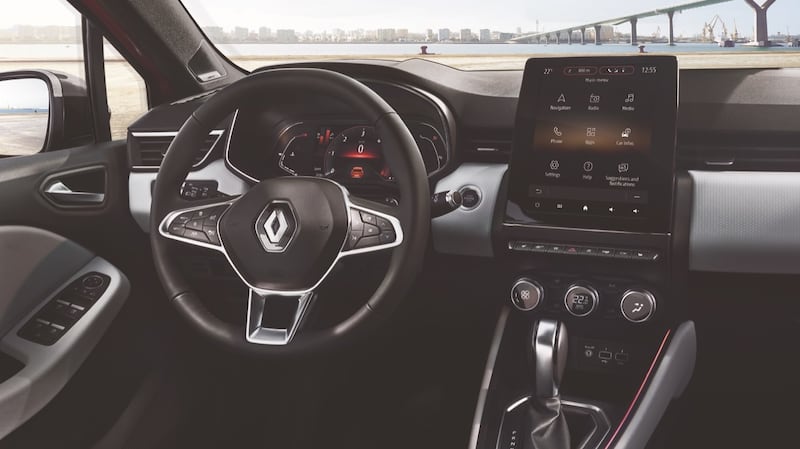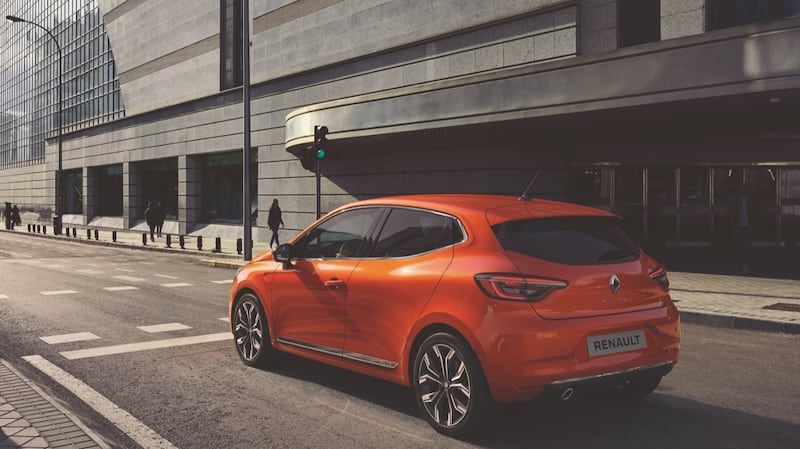Renault has revealed the new Clio, the fifth generation of the small hatchback which remains crucial to Renault's prospects even in an SUV-hungry world. As Renault's corporate edifice wobbles with the scandal surrounding its former chairperson, Carlos Ghosn, a continuation of the Clio's 15-million strong selling streak would certainly help steady the French ship.
Sales of such cars have slowed in Ireland in recent years, in spite of the Fiesta-Yaris-Polo-Clio size class having once been the best-selling segment. Now, only the Yaris and Fiesta bother the top-ten sales charts here, while the outgoing Clio is in 22nd place overall, according to 2018 figures from motorcheck.ie.
Across Europe, though, the Clio is still a high-flyer, and has actually increased its sales every year from 2012 to 2018, in spite of the apparent market saturation by SUVs and crossovers. So, the plan for the new Clio is to keep that going, hence the relatively conservative remake of the exterior styling.
The fifth generation Clio looks, to all intents and purposes, like a slightly shrunken version of the current Megane. That’s perhaps no bad thing — the Megane is one of the more handsome cars in its class — but the only way you’ll tell the two apart from a distance is that the Clio has a slightly more sculpted boot lid, and it tucks its rear doorhandles away in the c-pillar.

Thanks to being based on the latest-generation of the Renault-Nissan-Mitsubishi Alliance’s CMF-B platform (the new Clio is the first model to use the new chassis) it’s 14mm shorter than the outgoing car, but is bigger inside, according to Renault. It’s some 30mm lower, too, to the benefit of aerodynamics and fuel economy. Look closely and you’ll spot little air deflectors in front of the wheels, which channel air away from the turbulence created by the front wheels, and which smooths out the airflow.
The big headlights, with their distinctive C-shaped trails, are now full-LED units, which will be standard across the entire Clio range. Out the back, the boot is a very healthy 391l (more room than you’ll find in some Focus-Megane-Corolla-sized competitors) and this time Renault helpfully points out that the sub-woofer for the expensive, optional Bose stereo system doesn’t encroach on boot space.
If the exterior style of the new Clio is somewhat predictable, then the interior looks like a significant upgrade compared to the current model. Renault badly needs to improve the perceived quality of its cabins, to compete with the likes of Toyota and Volkswagen, and the Clio's cabin seems to be quite the step forward.
The most obvious addition is the large, portrait-style screen for the infotainment system. It’s a 9.3in unit, lifted from the current Espace (which is, more’s the pity, not currently sold here) and it uses a new version of Renault’s R-Link software, which appears to be rather more classy in appearance than the current iteration. Doubtless lower-spec models will get smaller screens, but this high-spec example certainly looks good.

That goes ditto for the digital instrument pack, which runs from a seven-inch screen to a ten-inch version, and which once again looks rather classier than Renault’s current, rather cheap-looking, digital dash. The top-spec ten-inch version will include satellite navigation in the instrument pack.
In terms of comfort, Renault claims that the Clio’s seats are more-or-less lifted from much higher-end models, with the intention of providing big-car comfort on longer journeys, while their slimmed-down headrests are meant to provide better light and visibility for rear-seat passengers.
In engine terms, Renault is keeping schtum for now, but you can safely expect to see the current 1.0l and 1.33l turbo petrol engines from elsewhere in the Renault range carried over to the Clio.
Diesel?
There will probably be a diesel option for markets that want it, but you're unlikely to see a diesel-engined Clio V ever on sale in Ireland. Electric power is a dead-cert, though. Renault has already confirmed that the new Clio will be one of its first hybrid-engined models, as it looks to compete with the Toyota Yaris, and by 2022 there will more than likely be a fully electric Clio, with its batteries and engines shared with the next-generation Zoe. The new Clio will also be one of the front-runners in Renault's push to provide more connected internet-based services in its cars, and it will incorporate more advanced driver assistance systems, as Renault is also making a big push to put autonomous (or at least more highly automated) cars on sale, also by 2022.
Finally, there will be a touch of Formula One glamour for the new Clio. Renault is gearing up for a more concerted assault on the F1 title in 2019, having signed hot-shoe driver Daniel Riccardo from rivals Red Bull. To hammer home the connection between track and road, the Clio will get a new RS-Line version, which replaces the old GT-Line models. RS-Line models will get a bumper with an F1-style "front wing" shape, 17-inch alloy wheels, a bulky bodykit, a smattering of carbon-fibre style trim, sportier seats, and a honeycomb radiator grille. A high performance, "full-fat" RS model will also appear in due course.
"The fifth generation Clio is very important for us as it is the best-seller in its segment and the second best-selling car in Europe, all categories combined. The Clio is an icon, and the latest features the very best of the previous generations. The exterior design of Clio IV won over our customers and continues to do so today, so we chose to keep that DNA while bringing modernity and elegance to the new model. The interior has undergone a true revolution, with a considerable improvement in perceived quality, greater sophistication and technology. It is the best Clio yet." said Laurens van den Acker, Renault's head of design.












